Alaska--Grizzly Bears and More
My mid-1980s trip to Alaska to see Grizzly bears in person taught me not only about bears by about myself.
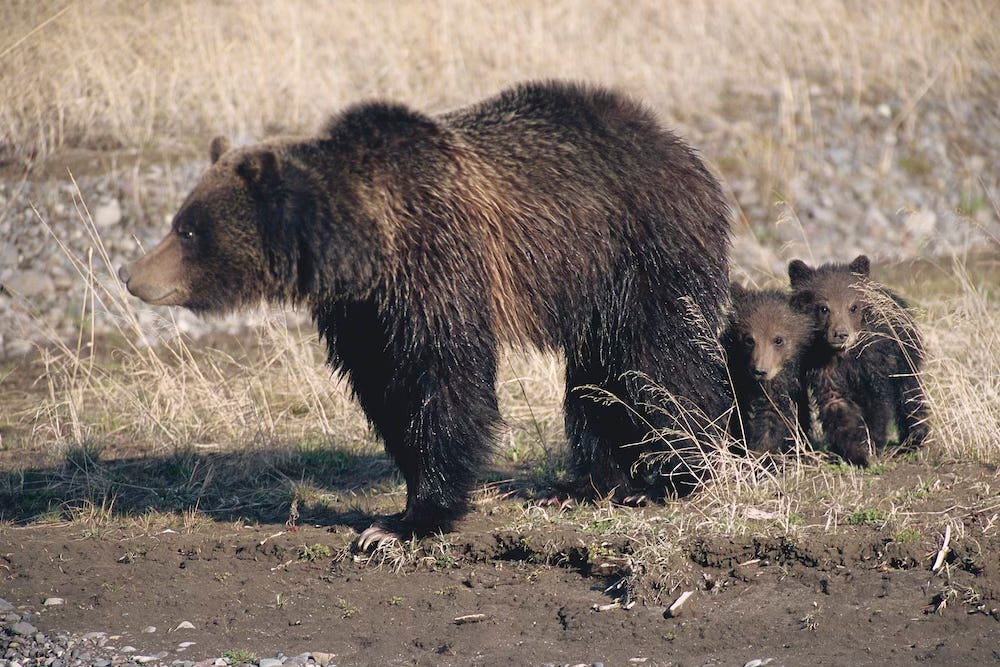
Photographer Bill Muñoz and I collaborated on many books, but up to the mid 1980s we’d stayed close to our homes in Montana, creating books about domesticated animals like horses and dogs. I had two sons to take care of along with my husband Greg, and I felt responsible to them and not to go too far away. But once the boys were in high school, I felt I could leave home to do book research. Bill and I had an editor who wanted a book on grizzly bears, and we wanted to write it. Grizzlies do live in Montana, but they stay safely away from people. Forget even seeing the rear end of one hurrying out of sight.
One of the best places to see grizzlies, also called brown bears, is Denali National Park in Alaska, where all wildlife is protected. Bill had gotten a photography permit good for 10 days, and he’d been spending all day every day—and the days are long in July in Alaska—driving up and down along the one road in the park, looking for grizzly photo ops. He was exhausted. He’d also applied for a permit to visit the McNeil River preserve, a place set aside for bears to feed on salmon that swim up the McNeil River every year to spawn.
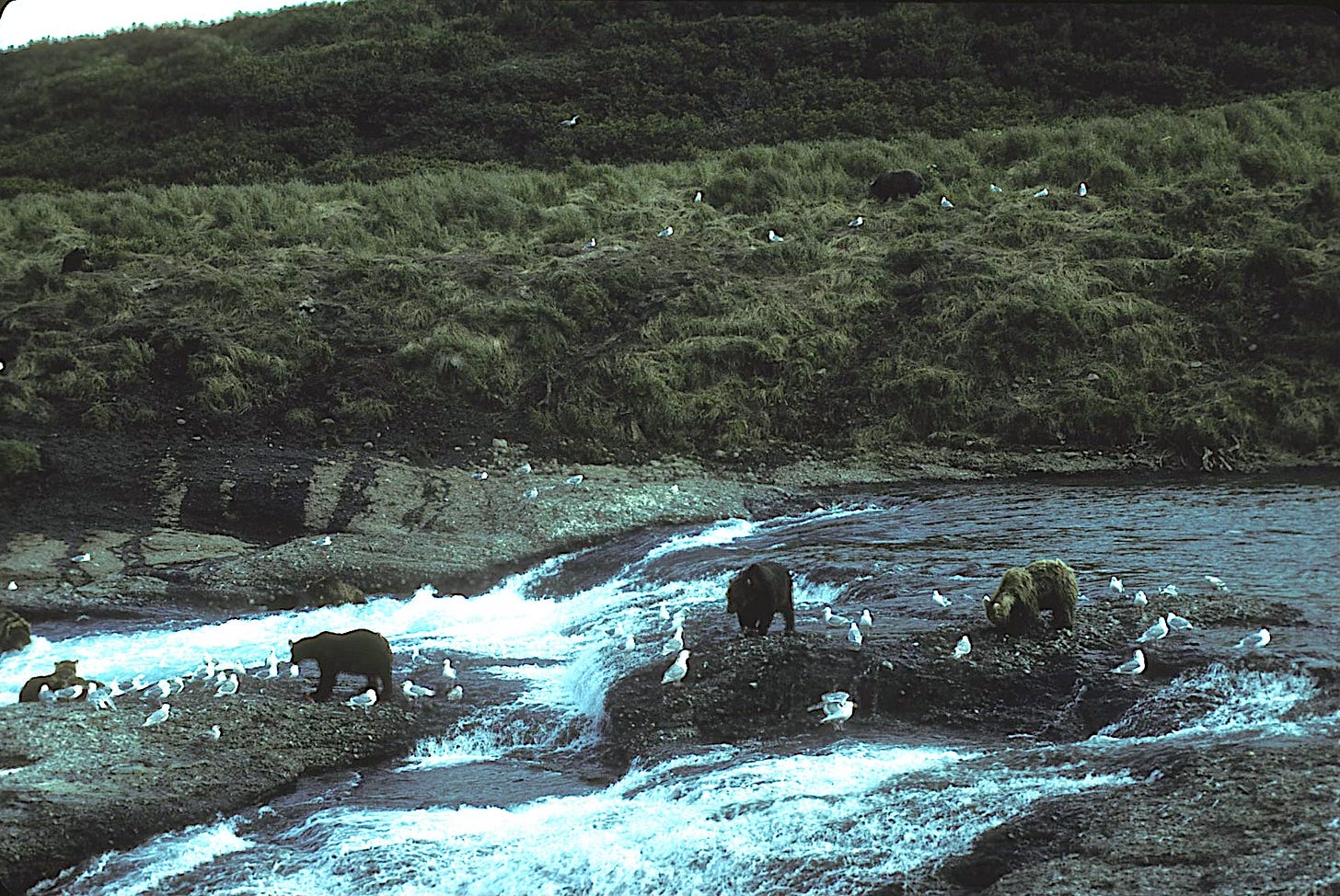
This preserve could only be visited as part of a limited group that would fly in on a float plane, stay in a campground, and fix their own meals in a large log cabin building. But this was THE place to see the bears. Salmon swim up the McNeal River to spawn, making the rocky rapids of the river a perfect bear fishing sight. The preserve had been there long enough, with human visitors arriving quietly to watch the bears passively.
Right after I got to Alaska, Bill received the permit for McNeil River. He was exhausted, and he had friends he really wanted to visit who would also provide him with a chance to rest before going back into Denali with me. So Bill asked me if I’d be willing to fly to McNeil alone, along with a couple of his cameras, to get photos of the bears. Alone? On a tiny float plane? Cooking my own food on a tiny gas stove I’d have to bring, along with my small thin-walled tent and sleeping bag? Camp alone right where the bears roamed? Along with a group of complete strangers? And responsible for getting good publishable photos that couldn’t be gotten anywhere else?
It felt like a big ask, and I was scared. I’m not sure now, looking back on the situation, just what was most scary about it—adventuring alone?—but I really wouldn’t be ‘alone,’ just not with anyone I knew. I’d have to bring everything I would need for those days—food, clothing, paper goods, tent, sleeping bag, wading boots, etc. What if I forgot something? And I didn’t know how to cook on that tiny gas stove—but someone could help me; and the small, old float plane that had to dodge the weather to take off and land safely and with the proper tides had been doing it safely for 30 years—but a 30 year old plane? Or was I mostly scared by the responsibility of taking those vital photos that would help make the book special? In my family, the big F, “failure,” was the most scary thing; it proved you couldn’t succeed, you were flawed and inadequate. That fear was deep inside of me.
After letting these thoughts run around and around in my head, I swallowed hard and said “Yes,” I’ll go it along and do my best to get those photos. It was going to be a “once in a lifetime” special exciting adventure I had to undertake.
The permit allowed for just 4 days of bear viewing, along with the travel days on the plane. Bill helped me buy all the food I’d need for my meals, mostly in cans. He was as expert at this as he’d camped out a lot by himself as a photographer. He showed me how to use his mirror camera that could take photos at a distance without a long lens but was very sensitive of the smallest hand movement. We bought special film that could produce publishing quality color photos even in low light. Remember, this was back in the 1980s, before cell phone cameras and other advances in photography.
Luckily the weather and the tides were favorable for the date I needed to leave. Only a few—I think there were 8 of us—clambered into the float plane wrestling with our gear. We had all been weighed to make sure the plane wasn’t overloaded, and for takeoff, the pilot asked us all to sit in the farthest back seats to help the plane’s nose to be pointing more upward for takeoff.
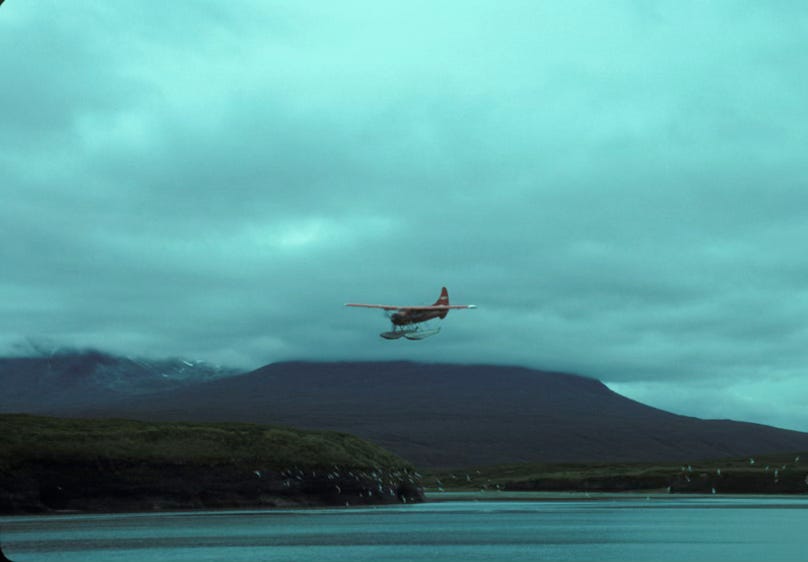
After moving into the forward seats to help the plane point more downward, we landed in the water just off shore near the preserve headquarters. We wore our hip boots and stood in a line in the water, passing our gear from one to another up to the shore, then helped pass the gear of the people departing on the plane along to the plane, then headed to the camping area to settle in
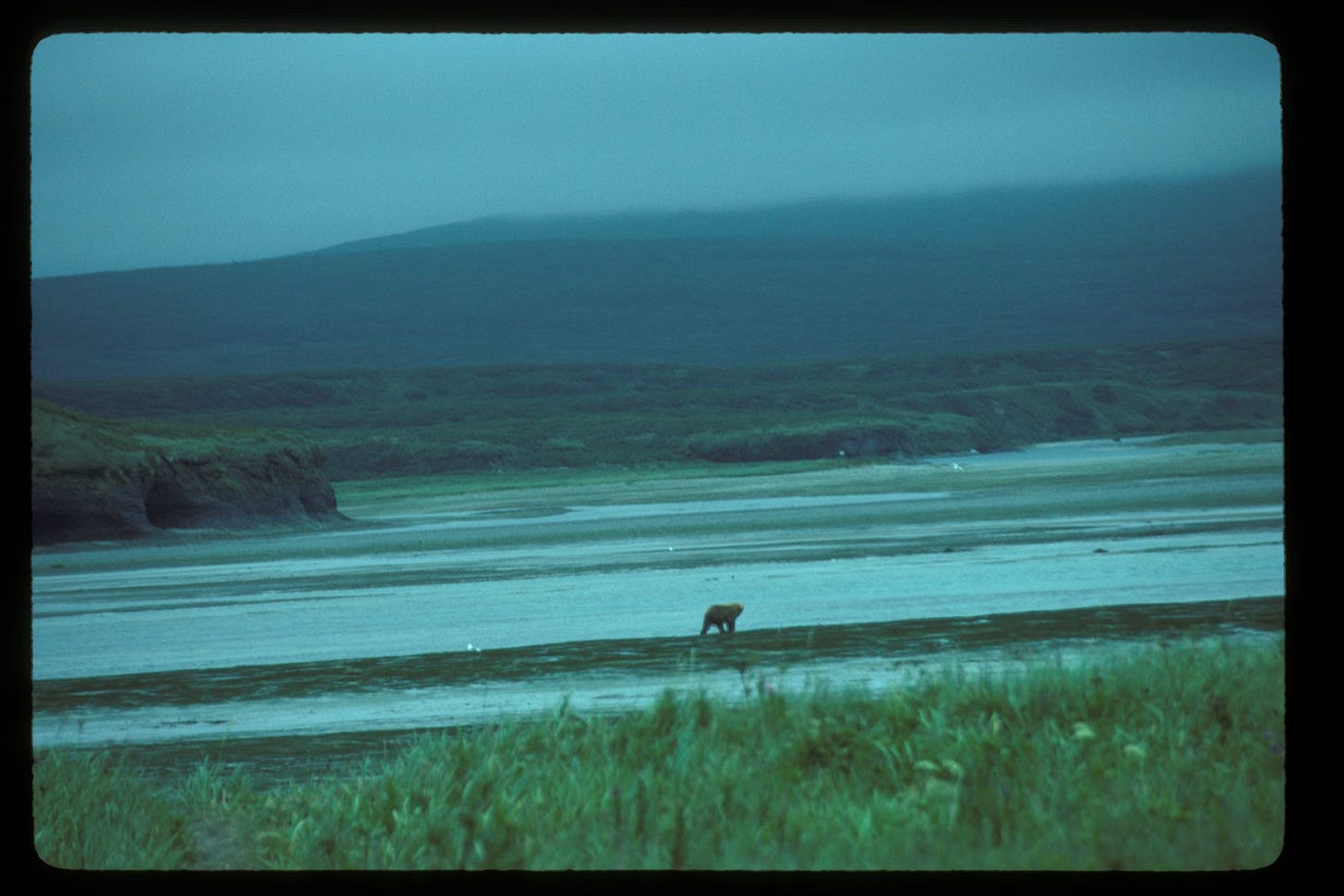
I pitched my little flimsy orange tent and looked out over the shallow shore water, where a few bears wandered about. The staff told us these were young bears that the adult bears chased away from the best fishing areas, so they had their attention focused on trying to find fish, not to bother humans. In the cookhouse, the shelves were stocked with horns, big whistles, drums and other noise makers, so that if a bear followed its nose at mealtime and got too close to the building, everyone inside would grab a noice maker of one kind or another and swarm out the door yelling, banging, and whistling. This helped show the bears that it was best to avoid the building.
After breakfast the next day, we headed out with our guide, wearing our hip boots and carrying our camera gear and some non-smelly food. Only a small group was allowed to go to the river site, led by a guide who carried a rifle. She said she’d been working there for a long time and had never had to fire a warning shot, much less shoot at a bear. The interspecies “deal” had been made—you leave us alone, we leave you alone.
A few chairs had been set up on a ledge overlooking the river, and I chose one. Once we were there at the riverside, we had to stay for the whole time, until the guide took us back to camp. The sky was cloudy, but at least it didn’t rain, so I had some hope of getting good photos. Luckily I had been enjoying photography since my dad gave me an upscale Leica when I went to Germany as an exchange student years before. Even so, I was nervous about becoming an instant wildlife photographer whose photos would be published!
A mother bear with two cubs walked over close to where I sat. They got so close I got nervous—who wouldn’t! I sat ver still as I watched them. But soon she called them down for a lesson while I watched, totally entranced. The “kids” moaned at being ordered to wait and watch while their mother fished.
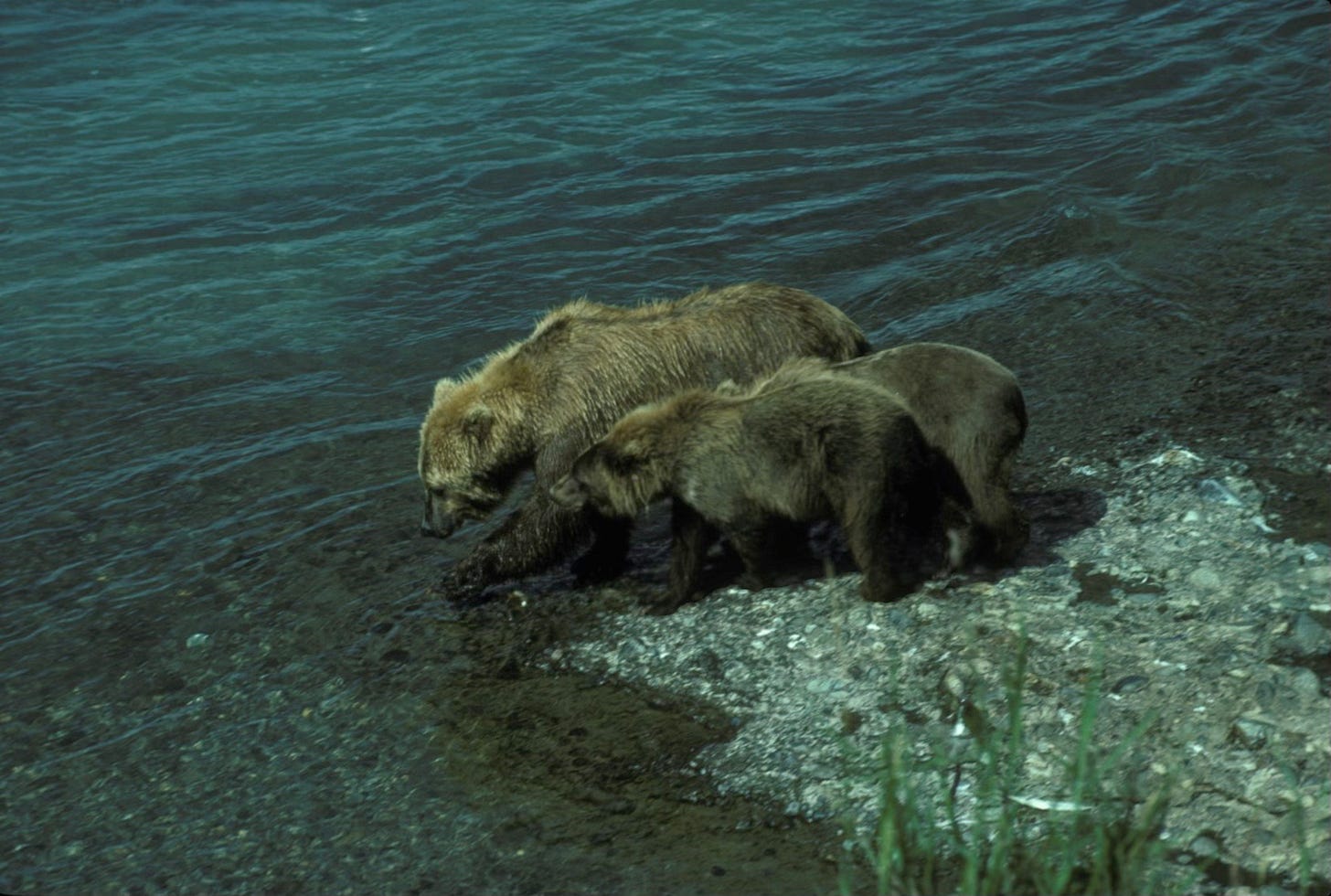
I couldn’t ask for anything more! Even with cloudy skies there seemed to be enough light to get good photos, and I was having a blast.
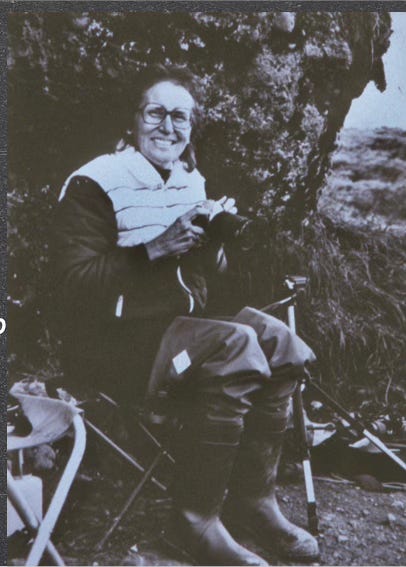
This experience gave me a lot of confidence in my ability to adapt to the circumstances in any situation. Later on this confidence came in handy as I continued my efforts to experience my topics in person as much as possible so I could write with a feeling of ‘being there’—I was there!




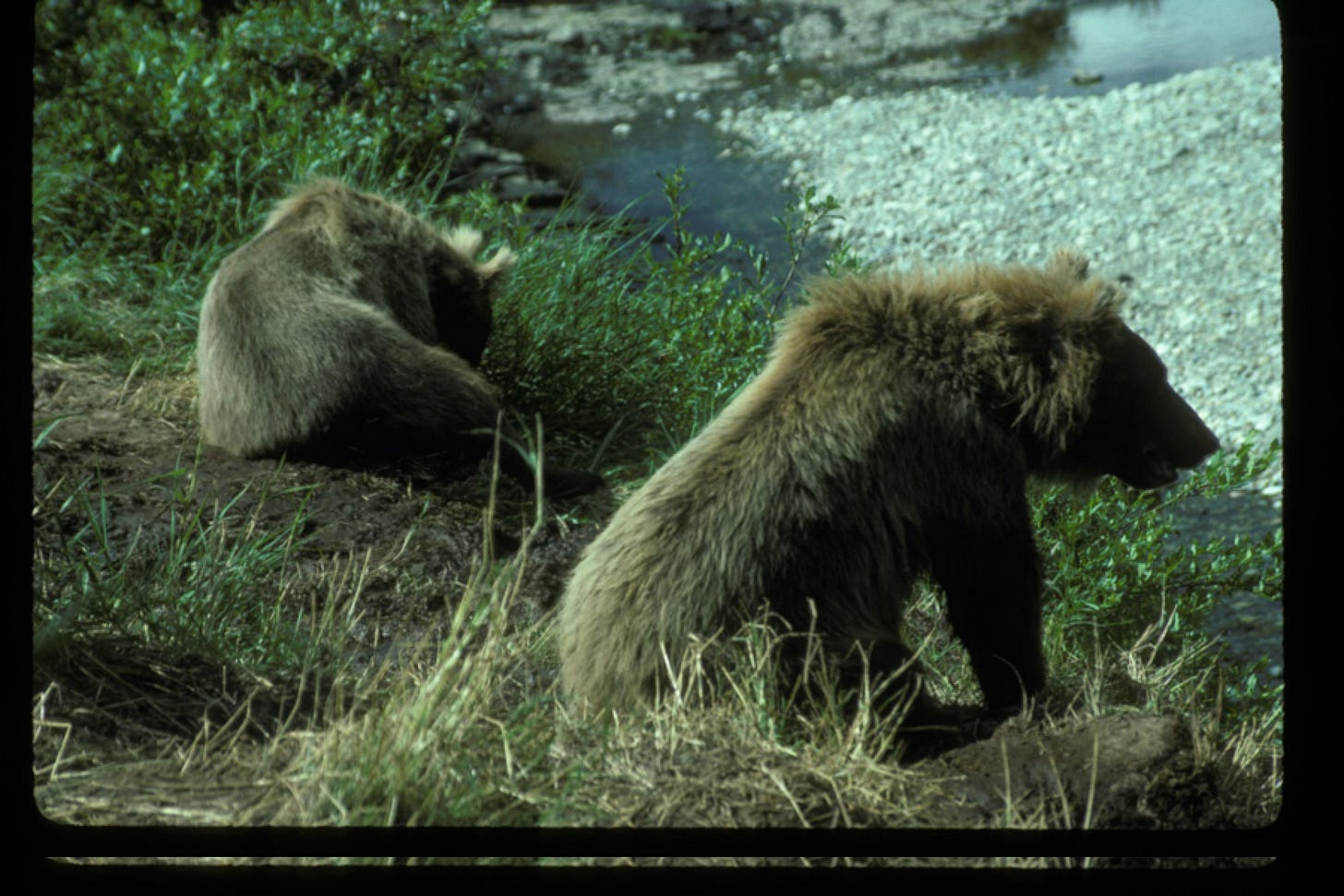
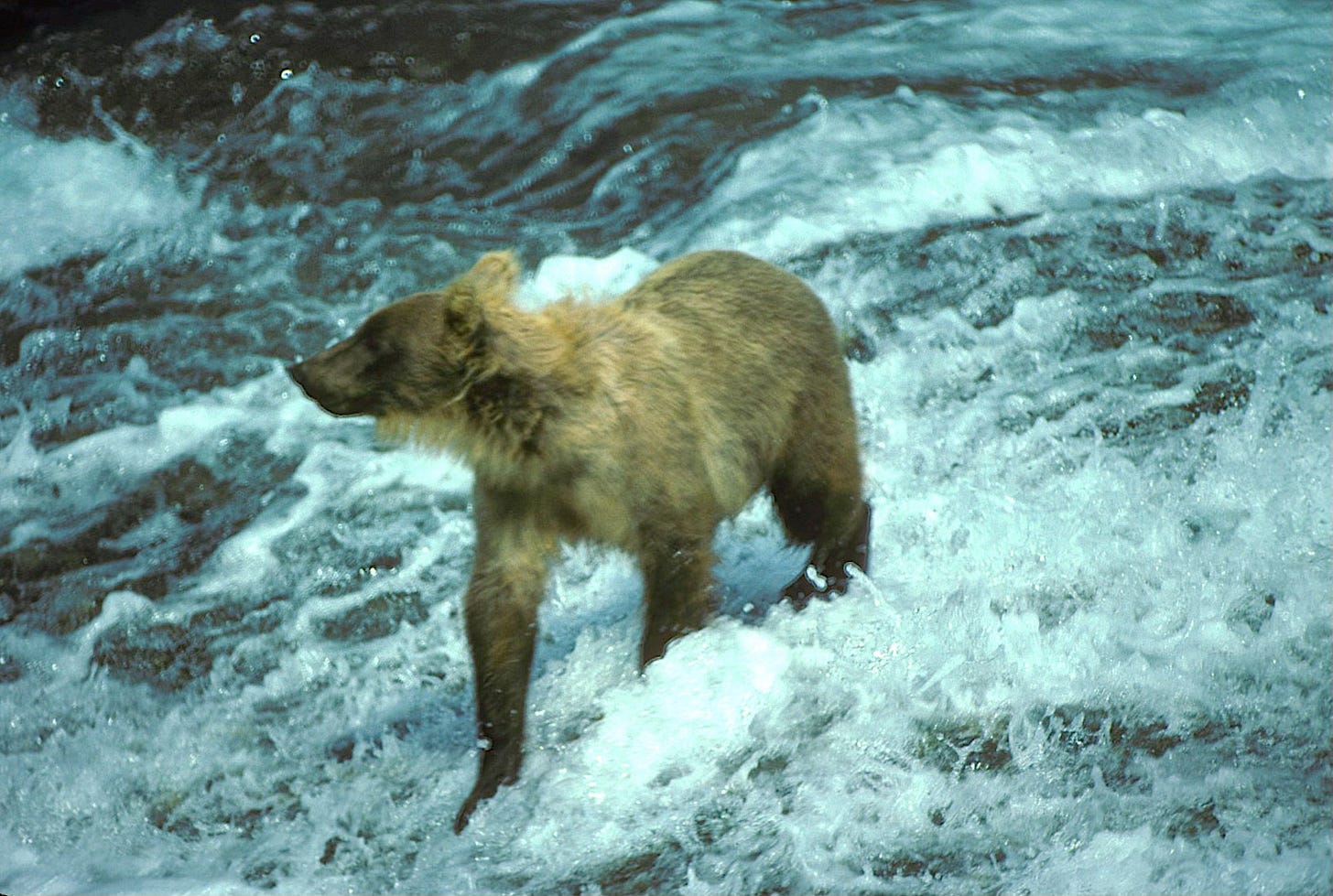
Your humor is great! I can just see the young bears, eager to catch fish, moaning that they have to get a lesson from Mom first.
What a great story! Thank you Dorothy. Your photos are fantastic and I particularly liked seeing the one of you in your younger years.❤️